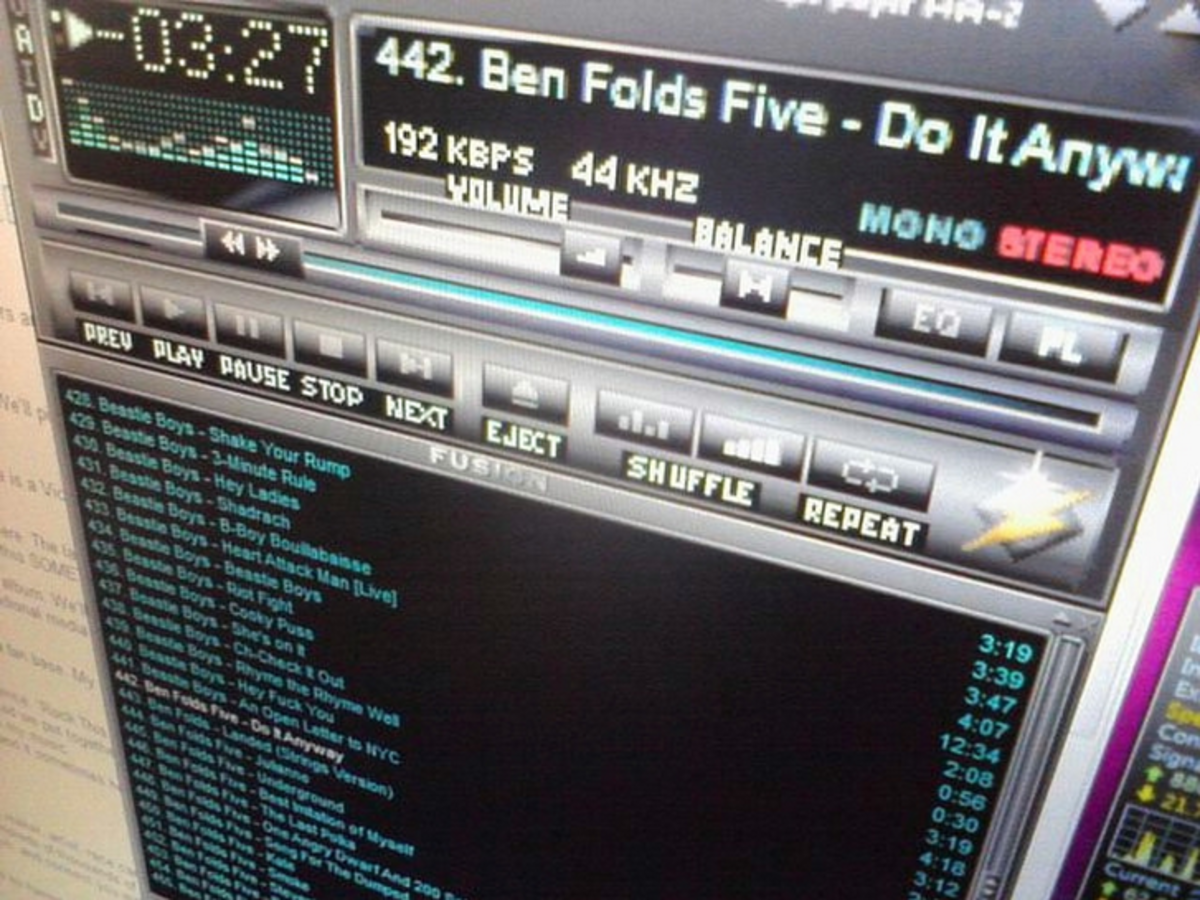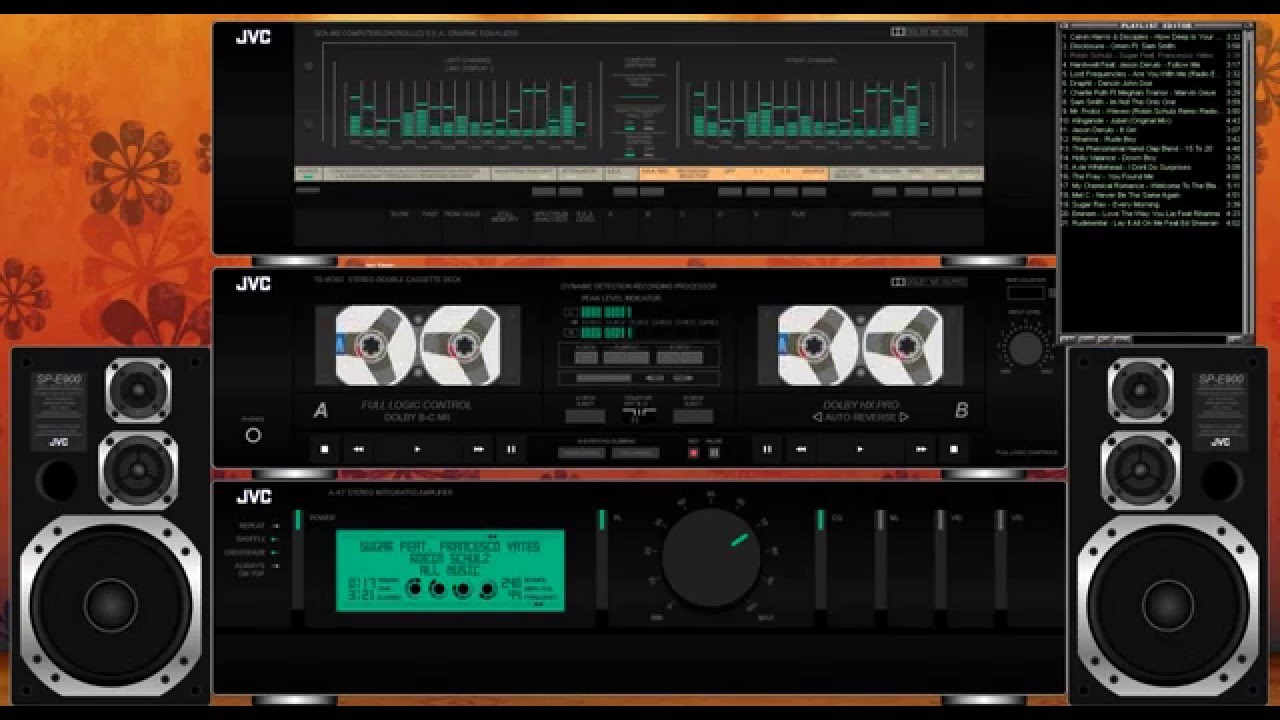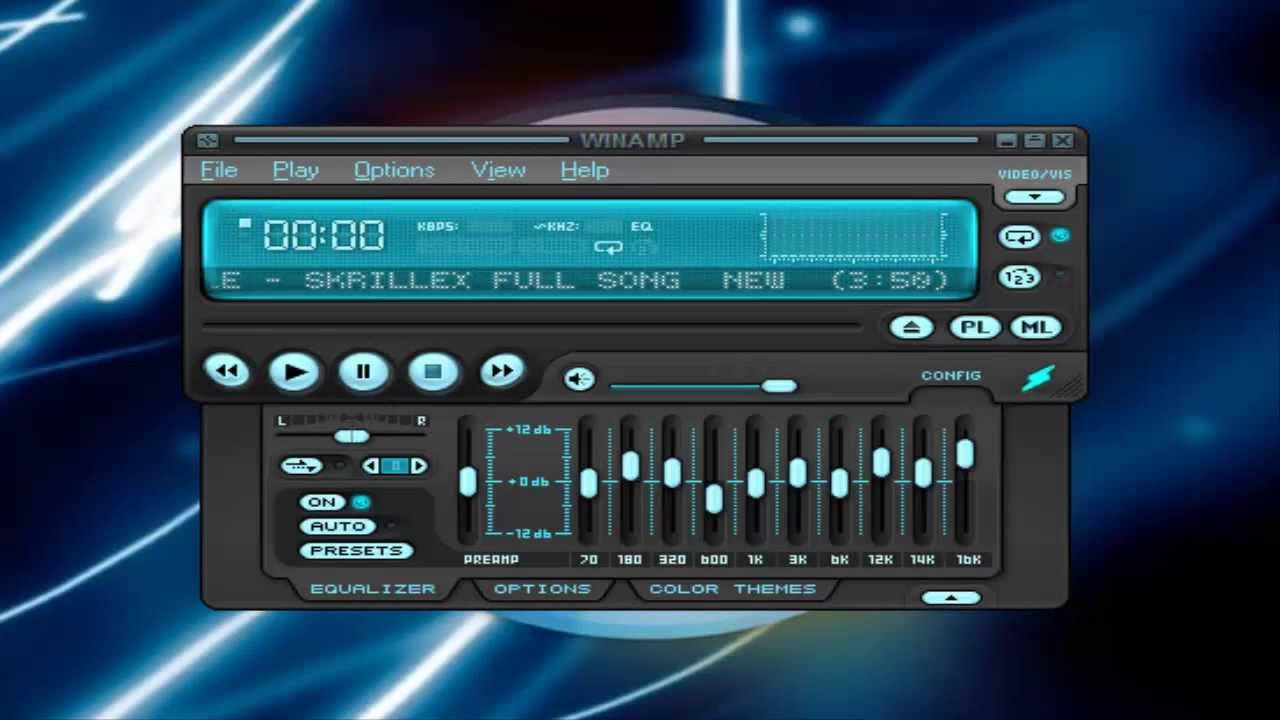Winamp, which we lost: what happened to the once most popular music player

Probably, many GT readers remember Winamp - at one time it was on almost every PC. Easy to use, the presence of plug-ins, including graphics, the quality of sound reproduction - all this led to the fact that Winamp has become one of the most popular players, if not the most popular.
Its story began in 1997, when the American Justin Frankel presented the alpha version of his project - WinAMP 0.20a. But already 18 months after the release of the program, 15 million people downloaded it. It certainly was a success.
The new MP3 player solved the main problem that bothered PC users of the late 90s. Which problem? Organizing your music files (talking about mp3) and playing them. Yes, there were various programs, including the WinPlay3 player, but it was all wrong. The functionality of this software was minimal, and the players themselves were few.
Frakel decided to develop his own player because "I have always made software that I would like to use myself," as he said later. And in the mid-90s, none of the players could create normal playlists, work with skins, or demonstrate beautiful visual effects. Those programs that at least knew something were simply huge. Minimalist and today the distinctive feature of the player Winamp. For example, the size of the installer for the same Mac still does not exceed 4 MB.
For the first time, Windows Advanced Multimedia Products (hence its abbreviated name WinAMP) was introduced to the world in April 1997. It was a free program. A little later, the player became “gloomy”, that is, it was distributed under a shareware license with a price of $ 10. Think nobody paid? In fact, paid, and not bad. The most interesting thing is that users who did not want to give their money for a media player, had access to absolutely all the functions of the program. Despite this, people paid, and some time after Winamp became popular, it began to bring $ 100,000 monthly to its creator. Checks were sent to the company by mail.
Further development of the player was carried out within the company Nullsoft (Lama became its logo). The project team consisted of only a few enthusiasts in their field. Their energy has led to the fact that the player has become even better, and in a very short period of time.
In 1999, the company and player bought AOL , paying as much as $ 100 million for this asset. Frankel went to work at AOL, being already a very rich man (and this is 20 years old). By the way, the company Nullsoft received offers to buy and to AOL. For the time being, the developers of the player resisted corporations and their proposals. But after the sum of $ 100 million was announced, it became difficult to resist, so it was decided to sell Nullsoft and Winamp.
Then everyone who was familiar with this deal expected very much from Nullsoft’s work as part of AOL, because America OnLine in the 90s and 2000s was a very strong player in the IT market. It was expected that the company would be able to do something significant in the music field. Winamp was at the peak of popularity and received hundreds of millions of views of its page in the late 90s. In addition, he made a profit, and very good. At that time, the number of users of the player numbered already 60 million, and many of them paid.

Unfortunately, the cooperation between the creator of the player and its buyer was not fruitful. Frankel wanted to improve the program, based on his understanding of the quality product. But the corporation held a slightly different opinion - for it the main thing was to make a profit. There is nothing bad in this, but because of this state of affairs, the work was not carried out in the direction in which the creators of the player wanted to lead it. Constant administrative problems, bureaucratization and lack of initiative on the part of management have led to the fact that the active development of the player has stopped.
In principle, for a while Frankel’s work as an AOL employee was going well. But over time, Nullsoft transformed into a corporate unit with its own tasks. And the company, despite the fact that it was bought by AOL, did not want this. At this time, in order to “do something useful,” the head of Nullsoft created Gnutella , a decentralized system where there was no main server and no possibility of a complete shutdown. Frankel introduced his brainchild in early 2000, saying that "AOL can still do good things." And it was really true. However, internal corporate problems impeded AOL’s structural division to develop its product.
Almost all companies that became part of AOL at different times have always been in second position with the management of the corporation. The company allocated the main division (which gave priority) and secondary. All problems were solved first within AOL itself, which sometimes took a lot of time, and then questions and requests from divisions like Nullsoft were considered. Another negative point - not the best attitude of US residents to AOL itself. She conducted an intensive marketing campaign over the course of many years and managed to make for herself, if not enemies, then people who treated her negatively. Well, the fact that during the installation of the player, users began to receive offers to install something else, influenced the popularity of Winamp itself.
AOL itself didn’t have a development strategy for its music division. But the company could become something like Pandora or Spotify. She had all the possibilities for this - a music player, a library of content, a radio service, and talented engineers. But it did not work out.
And in 2001, Steve Jobs introduced the iPod. At that time there were other hardware MP3 players. But they were not comfortable, and they were used, rather, out of despair. But the iPod was something new, and this new one turned out to be very convenient. By 2003, Apple sold a million iPods and opened the iTunes Music Store. As a result, many geeks and music lovers went to the Apple camp and forgot about Winamp and AOL.
And even then, the leadership of the latter did not realize it. “AOL did a lot to make its development impossible,” said one of the representatives of the Winamp team in the early 2000s. “More than anyone else. They bureaucratized any decision. Good ideas just died. ” AOL has launched its own music service, MusicNet. But a limited number of music jumps made it possible for Apple to get ahead.
Frankel talked about his work at AOL as follows: “I always hoped that they would look back and understand that they were killing the player, after which they would begin attempts to find a more suitable way of development. But AOL seems to be too busy with its own internal policies to do anything else. ”

In 2004, Nullsoft employees, who stood at the origins, decided to leave it and do something else. However, in 2009, the player still had loyal users - and quite a few. As many as 70 million people continued to work with the player, listening to their favorite music for interesting visual effects (by that time there were a lot of plug-ins). Then, in 2004, shortly before his dismissal, Frankel wrote a few lines about his impressions of cooperation with AOL on his website: “For me, programming is a form of self-expression. The company controls the most effective means of self-expression that I have. This is unacceptable to me as an individual, so I must leave. ”
New Winamp Story
After the departure of the founder of Nullsoft, AOL almost ceased to engage the player. No, the program was updated and even received all new users. So, in 2007, 90 million people used the player. This is 30 million more than at the time of purchase of Nullsoft. At the same time, Winamp was developed by a small group of 6 programmers. There was no development strategy, or it was not viable.
After some time, the leadership still paid attention to this problem and decided to actively engage in the development of Winamp. Suddenly it turned out that the player has not only English-speaking users, but also representatives of many other language groups. As a result, it was decided to provide technical support to users from Germany, Poland, Russia, France. In addition, in AOL drew attention to what is called today "freemium model." The main functionality was quite working, but I had to buy more “buns”.

In 2010, the Android version of the player. A year later, the Mac version was released. A few years later, it was announced that Winamp support was discontinued. A number of media outlets wrote that “Winamp is everything.” Fortunately, this was not the case; the player is still afloat and quite successful. At the moment, the number of Winamp users is 30 million. This is still very much, and it is clear that the player is by no means dead. Since the release of the Android version, users have installed this application more than 19 million times.
AOL does not currently own Winamp. All assets were purchased by Radionomy in 2014.. A year later, in December 2015, Vivendi SARL bought 64% of the shares of Radionomy. The current owners claim that Winamp and SHOUTcast were among their most significant assets. Despite the fact that Winamp has not been updated for several years, there is a possibility that this will happen.
And Winamp itself can redeem the previous owners, in any case, there is talk about it. Anyway, and the player is far from dead, it continues to exist. Although, probably, this is in spite of, and not because of, circumstances.
